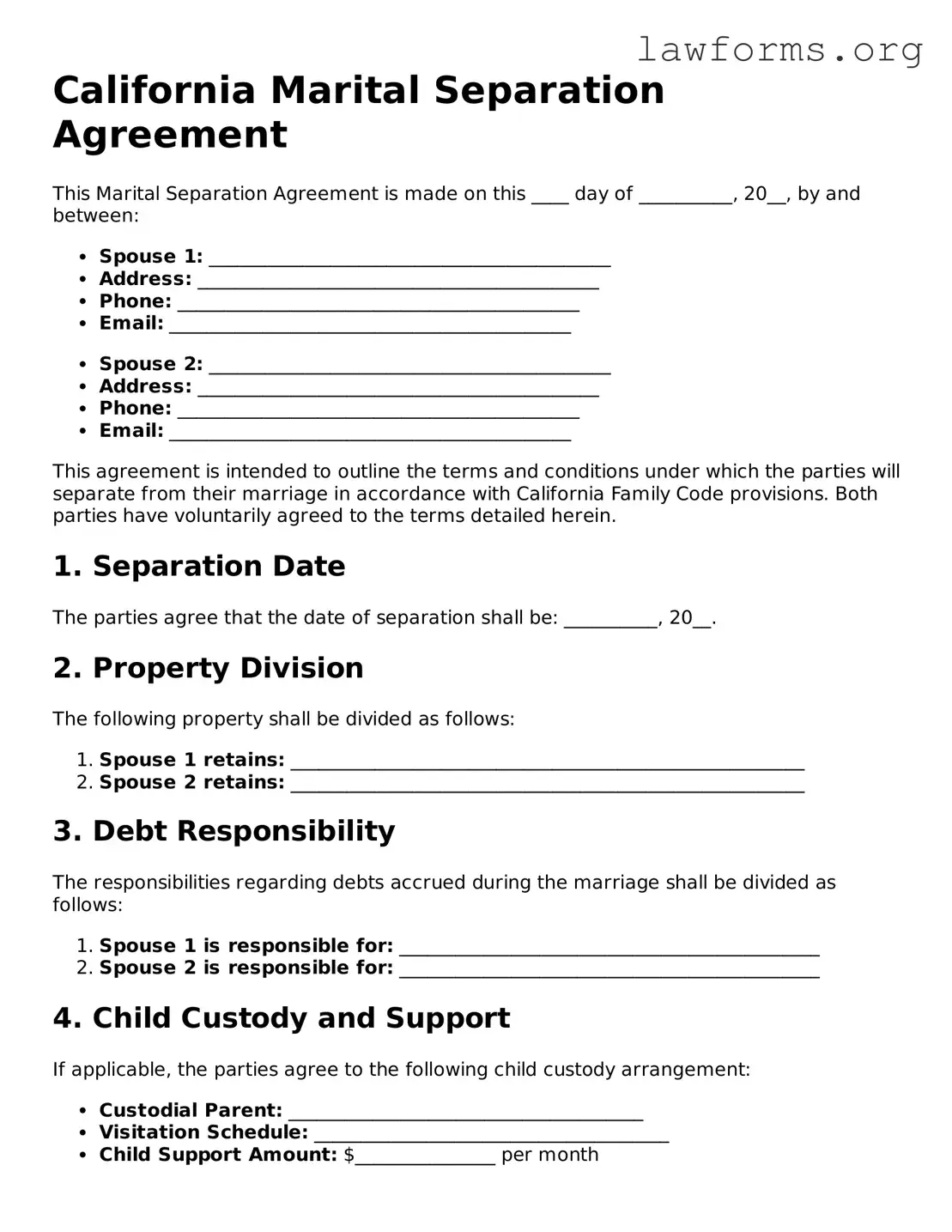California Marital Separation Agreement
This Marital Separation Agreement is made on this ____ day of __________, 20__, by and between:
- Spouse 1: ___________________________________________
- Address: ___________________________________________
- Phone: ___________________________________________
- Email: ___________________________________________
- Spouse 2: ___________________________________________
- Address: ___________________________________________
- Phone: ___________________________________________
- Email: ___________________________________________
This agreement is intended to outline the terms and conditions under which the parties will separate from their marriage in accordance with California Family Code provisions. Both parties have voluntarily agreed to the terms detailed herein.
1. Separation Date
The parties agree that the date of separation shall be: __________, 20__.
2. Property Division
The following property shall be divided as follows:
- Spouse 1 retains: _______________________________________________________
- Spouse 2 retains: _______________________________________________________
3. Debt Responsibility
The responsibilities regarding debts accrued during the marriage shall be divided as follows:
- Spouse 1 is responsible for: _____________________________________________
- Spouse 2 is responsible for: _____________________________________________
4. Child Custody and Support
If applicable, the parties agree to the following child custody arrangement:
- Custodial Parent: ______________________________________
- Visitation Schedule: ______________________________________
- Child Support Amount: $_______________ per month
5. Spousal Support
If applicable, the parties agree to the following terms for spousal support:
- Amount: $_______________ per month
- Duration: ______________________
6. Miscellaneous Provisions
Both parties agree to the following additional terms:
- ____________________________________________________________
- ____________________________________________________________
By signing this agreement, both parties affirm that they have read and understood its content and voluntarily agree to its terms. Each party also acknowledges that they have had the opportunity to seek independent legal counsel.
Signed by:
- Spouse 1 Signature: ______________________________ Date: ___________
- Spouse 2 Signature: ______________________________ Date: ___________
